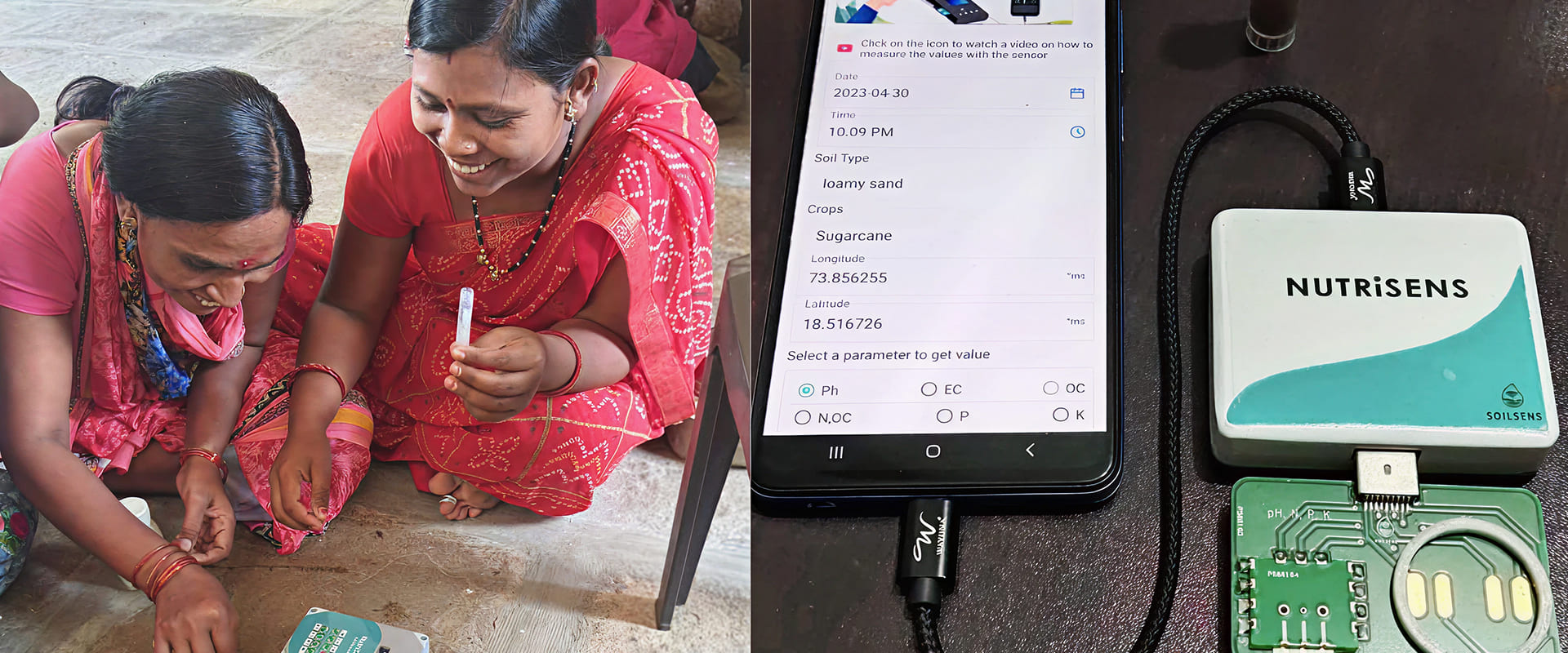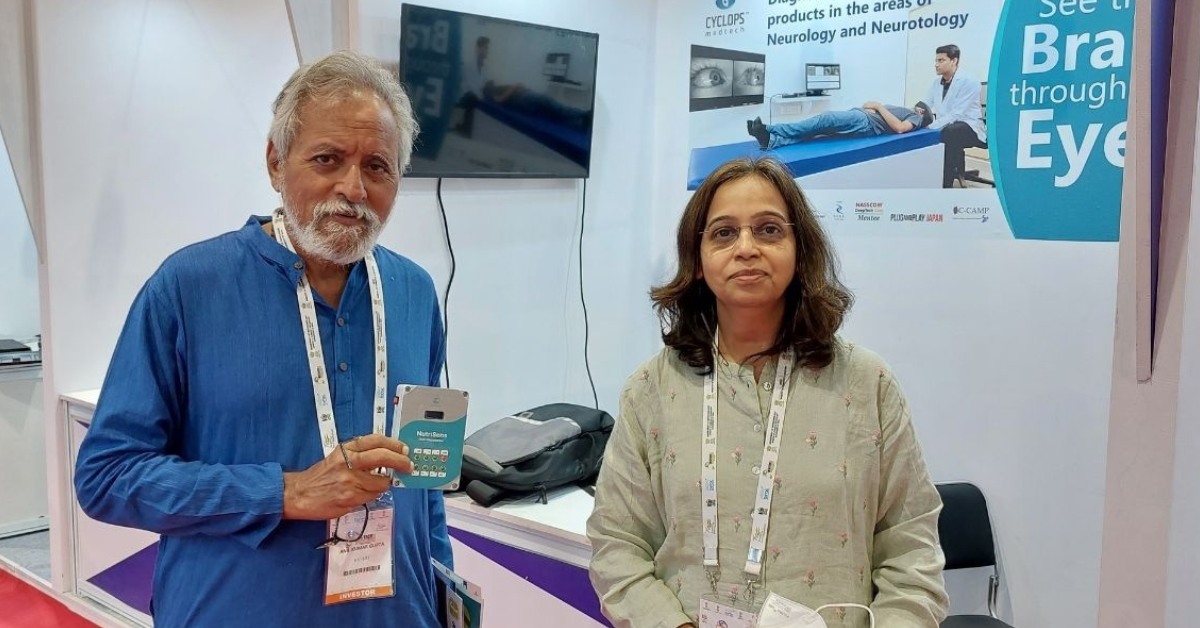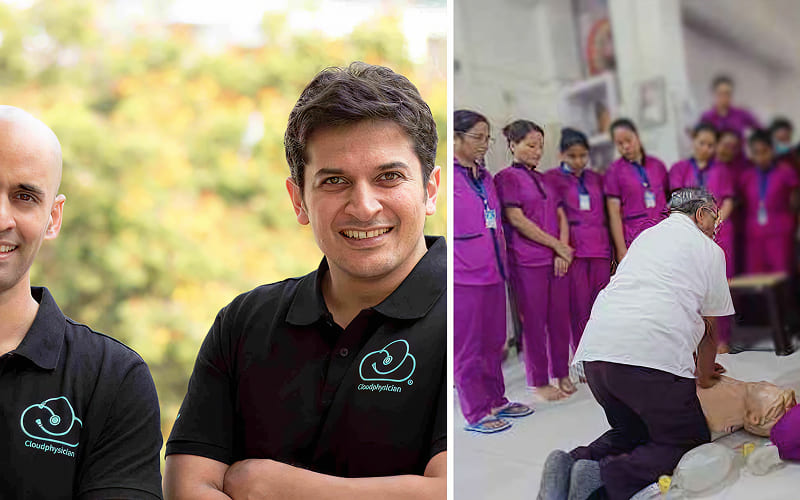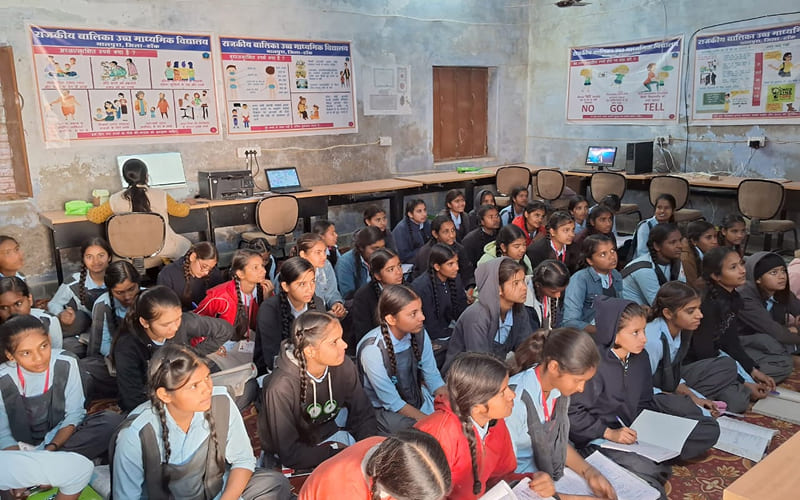
Shrinking Soil Testing to 5 Minutes: A Homegrown Breakthrough Reimagines Soil Health Diagnostics
To combat declining soil health and inefficiencies in fertiliser use, Dr. Rajul Patkar developed NutriSens—the world’s smallest, portable soil testing device. Affordable and fast, it empowers farmers with real-time insights, boosting yields and sustainability. Now used across multiple Indian states, it also fosters rural entrepreneurship, aligning with national goals in agriculture, digital inclusion, and skill development.
Updated on: 19 June 2025

Sector

Solution
Technology

State of Origin
Impact Metrics
10,000–15,000 farmers
are using this device across multiple states.
Reduces soil testing cost
reduced from ₹500 to ₹300
3,000 tests annually
per device, with a lifespan of three years.
Real-time insights
on soil health and fertiliser use.
In the agricultural heartlands of India, one woman’s innovation is transforming how farmers understand their soil. Dr. Rajul Patkar, co-founder and CEO of Proximal Soilsens Technologies, has developed NutriSens, a portable, affordable, and user-friendly soil testing device hailed as the world’s smallest of its kind. Inspired during her PhD at IIT Bombay over a decade ago, Dr. Patkar envisioned a tool that could simplify soil diagnostics in the same way glucometers revolutionised diabetes care. Her idea was simple: if blood can be tested in seconds at home, why not soil?
The resulting device, NutriSens, uses paper-based sensor strips to measure six critical parameters—pH, electrical conductivity, nitrate, phosphate, potassium, and another major nutrient—in less than five minutes, using only one gram of soil. The results are immediately available on a mobile app, along with a downloadable soil health card. This not only eliminates the traditional two-week wait for lab reports but empowers farmers with real-time data to make informed decisions about fertiliser usage.

Reviving depleted lands with smart, swift science
India’s agricultural output has become increasingly dependent on excessive chemical fertiliser use, a trend which masks the deepening crisis of deteriorating soil health. In the 1970s, farmers used around 54 kg of fertilisers per hectare for a yield of 2 tonnes; today, that number exceeds 280 kg for the same yield. The cause? A lack of access to timely, localised soil diagnostics.
Dr. Patkar’s innovation directly addresses this issue. With just 3,000 soil testing labs to serve 14 crore farmers, the existing system was clearly insufficient. NutriSens offers a decentralised, rapid, and affordable alternative. Farmers can now test their fields directly, skipping delays and guesswork. In regions like Solapur, farmers have already begun switching from urea to organic alternatives like cow dung after receiving immediate, actionable insights from the device.
From field tool to livelihood engine

What began as a scientific tool is now evolving into a grassroots enterprise model. Dr. Patkar’s team has trained and empowered rural women to become soil health entrepreneurs, travelling between farms to conduct tests and interpret results. Priced at ₹35,000—about half the cost of alternatives—the device enables users to earn back their investment within one cropping season. In Maharashtra, Mangal Dhumal, one such microentrepreneur, has served over 30 farmers across multiple villages, offering both scientific insight and economic opportunity.
To date, NutriSens has been used by agripreneurs across states including Assam, Punjab, Telangana, Gujarat, Jharkhand, Madhya Pradesh, and Rajasthan, reaching an estimated 10,000 to 15,000 farmers. The device has a lifespan of three years and can handle approximately 3,000 tests annually, reducing the cost of individual testing from ₹500 in private labs to ₹300 in the field.
Democratising access to soil intelligence
Dr. Patkar’s NutriSens initiative resonates strongly with India’s broader policy architecture. It reinforces Digital India and Skill India by offering app-enabled diagnostics and building digital capacity among rural entrepreneurs. It supports Soil Health Management under the National Mission for Sustainable Agriculture by enabling precise, hyperlocal interventions to reverse land degradation. By promoting data-driven farming and reducing input costs, the device furthers the objectives of Doubling Farmers’ Income and contributes to the goals of Viksit Bharat through inclusive, technology-led rural empowerment.
NutriSens brings laboratory-grade analytics to the farmer’s doorstep and puts critical decisions back in their hands. By democratising access to soil intelligence, the device not only strengthens individual livelihoods but also contributes to the nation’s food security and ecological resilience. If scaled effectively, it could usher in a new era of precision agriculture—made in India, for India.
Share Your Story Today, Shape Viksit Bharat Tomorrow
Got an idea, innovation, or experience that's making a difference? Share your story now and ignite India's transformation because your voice can drive the future forward!
BUILD YOUR OWN
BUILD YOUR OWN
How can I implement this innovation effectively?
How is this innovation being adopted around the world?
Where else could this innovation make an impact?
Who has seen real results from using this innovation?
Who has seen real results from using this innovation?
What policies support or influence this innovation?
How could this innovation evolve in the future?
Who has seen real results from using this innovation?
How can I contribute to or participate in this innovation?
What resources can help me explore this innovation further?
If you would like to know more about this innovation, fill this form to contact the innovator.
Handpicked stories tailored just for you
Explore stories that inspire, inform, and ignite new ideas across tech, innovation, and real-world impact


Tele-ICU Technology Revolutionizes Critical Care Access Across India
Bengaluru-based Cloudphysician is transforming ICU care with its Tele-ICU platform, connecting hospitals to remote intensive care experts 24/7. Co-founded by...
Read More

